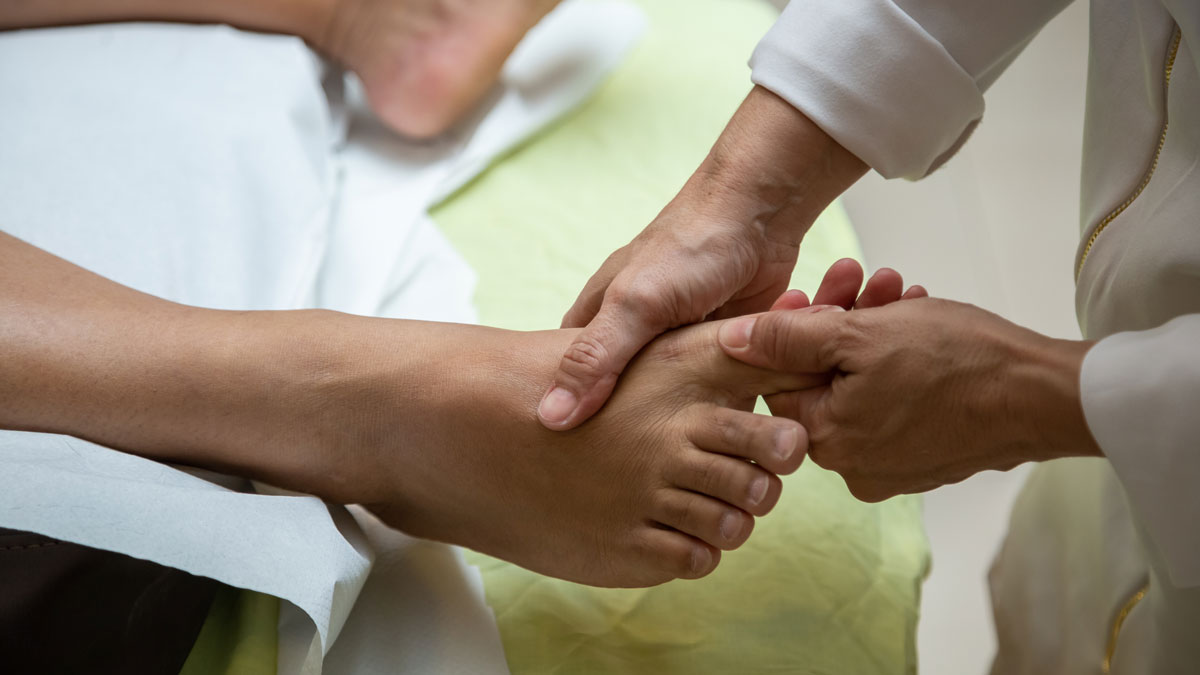Before I begin, I want to stress the importance of reviewing information on diabetic peripheral neuropathy before proceeding on to this protocol. This protocol is only successful when you have full client participation and when you understand the clinical significance and importance of this potentially devastating condition.
Under treating or failing to engage the client in their own treatment can render this protocol useless. This is a protocol that requires 100% participation and commitment from the therapist and client.
While my focus has been on diabetic peripheral neuropathy, it's important to note that this protocol also works for chemotherapy-induced peripheral neuropathy (CIPN). Some chemotherapy agents cause peripheral neuropathy that is so disturbing and painful to the patient that they consider stopping their chemotherapy treatment. Because that is not a viable option, oncologists will sometimes adapt the chemotherapy treatment in hopes of lessening or preventing the neuropathy.
Remember the pathophysiology of peripheral neuropathy: Distal circulation is compromised and the blood vessels themselves become occluded beginning with the small capillaries. Unable to supply the surrounding tissue and nerves with nutrients and oxygen, the resulting oxidative debt causes nerves to malfunction, sending signals to the brain of pain, tingling, burning and numbness.
And now let's recall one of the chief benefits of massage: increased circulation.
This peripheral neuropathy massage protocol can be painful for the client, so care must be taken to work to the client's tolerance in each session. That being said, however, it's important to bear in mind that the ultimate goal is to gradually increase pressure so that eventually you are working tissue "to the bone."
Naturally, this is a process. In the first few sessions, you may find that all you can do is touch their feet. Remember, you're looking to build a long-term relationship with the client, so don't rush the process. This work can take months depending on the severity of the neuropathy and the cooperation of your client.
Sixty-minute massage therapy sessions should be performed once a week for the duration of the symptoms. Remember that infrequent, non-detailed therapy is ineffective and the main goal is consistent, daily, deep work.
Client Self-Care Protocol
Daily, detailed self-care is essential in order to improve the tissue damaged caused by peripheral neuropathy. The suggested client homework is as follows:
Spend 15 minutes each day on each foot.
- Lightly massage both feet as deeply as you can without causing pain.
- Perform full range of motion exercises at your ankles. A fun way to do this is to "write out" the alphabet using your ankle joints and toes. Grasp each toe at the tip in massage and squeeze as deeply as you can without causing pain. Work the entire toe from the tip to the base on both feet.
- Deeply stroke the skin of both feet moving in an upward direction toward your knee. Next squeeze and massage all of the tissue of your feet starting between the toes, include the front and back surfaces of your feet. Squeeze, press and massage the entire foot as deeply as you can without causing pain.
- Stroke the skin of both feet from your toes to your knees once again moving in the direction towards the knees. Massage the calves then repeat the range of motion exercises at your ankles.
Clients should also be encouraged to take off their shoes and rub their feet on the floor, bend and wiggle their toes, roll a tennis ball under the soles of their bare feet, and perform range of motion exercises and massage their feet deeply whenever possible throughout their day.
